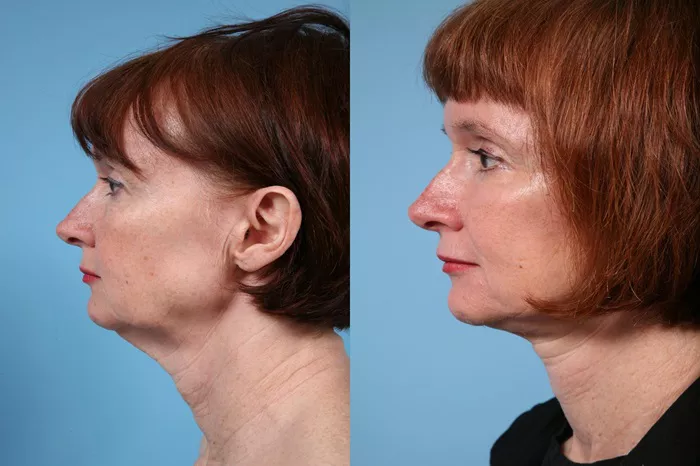Neck lifts are a popular cosmetic procedure aimed at reducing signs of aging. They address issues such as sagging skin, excess fat, and muscle banding in the neck and jawline area. Determining the best age for a neck lift involves understanding various factors that influence aging and skin elasticity. This article explores these factors, considerations, and the general guidelines for choosing the right age for a neck lift.
Factors Influencing the Ideal Age for a Neck Lift
1.Genetics
Genetics play a significant role in determining when signs of aging will appear. If your family members tend to develop sagging skin or wrinkles early, you might notice these changes sooner. Conversely, if your family has a history of maintaining youthful skin longer, you might not need a neck lift until later.
2.Skin Elasticity
Skin elasticity decreases with age. This loss of elasticity is a primary reason for sagging skin. Younger individuals generally have better skin elasticity, which can lead to more satisfactory and longer-lasting results from a neck lift. Assessing your skin’s elasticity can help determine if it’s the right time for the procedure.
3.Lifestyle Factors
Lifestyle choices significantly impact skin aging. Factors such as smoking, excessive sun exposure, poor diet, and lack of exercise can accelerate the aging process. Individuals with healthier lifestyles might not need a neck lift as early as those with less healthy habits.
4.Weight Fluctuations
Significant weight changes can affect the skin’s elasticity and lead to sagging. People who experience major weight loss might consider a neck lift to remove excess skin and achieve a more contoured neck and jawline.
Typical Age Range for a Neck Lift
1.Late 40s to Early 60s
Most individuals who opt for a neck lift fall within the late 40s to early 60s age range. During these years, the signs of aging, such as loose skin and muscle banding, become more pronounced. A neck lift at this stage can effectively address these issues, leading to a more youthful appearance.
2.Mid to Late 30s
Some individuals might consider a neck lift in their mid to late 30s, particularly if they experience premature aging due to genetics or lifestyle factors. Early intervention can provide subtle enhancements and potentially delay more significant aging signs.
3.After 60
While it’s less common, some individuals opt for a neck lift after 60. The results can still be significant, but the skin’s reduced elasticity might affect the longevity of the results. Advanced age doesn’t preclude someone from having a neck lift, but it requires a more tailored approach.
See also: What to expect after a neck lift: Things You Need To Know
Benefits of a Neck Lift
1.Enhanced Appearance
A neck lift can dramatically improve the neck and jawline contours, reducing sagging skin and muscle banding. This leads to a more youthful and refreshed appearance.
2.Boosted Self-Confidence
Improving physical appearance through a neck lift can enhance self-esteem and confidence. Many individuals report feeling more comfortable and confident in social and professional settings after the procedure.
3.Long-Lasting Results
When performed at the right age and with proper care, the results of a neck lift can last for many years. Maintaining a healthy lifestyle can further prolong the benefits of the surgery.
Considerations Before Opting for a Neck Lift
Health Status
A thorough health evaluation is crucial before undergoing any surgical procedure. Ensuring you are in good health minimizes the risks associated with surgery and enhances recovery.
Realistic Expectations
Having realistic expectations about the outcomes of a neck lift is essential. While the procedure can provide significant improvements, it’s important to understand its limitations and what it can achieve.
Choosing the Right Surgeon
Selecting a qualified and experienced surgeon is paramount for achieving optimal results. Researching and consulting with board-certified plastic surgeons can help you find the right professional for your needs.
Preparing for a Neck Lift
Initial Consultation
The first step in preparing for a neck lift is an initial consultation with a plastic surgeon. During this meeting, the surgeon will evaluate your health, discuss your goals, and determine if you are a suitable candidate for the procedure.
Pre-Surgery Guidelines
Your surgeon will provide specific pre-surgery guidelines, including dietary recommendations, medication adjustments, and skin care instructions. Following these guidelines helps ensure a smooth surgery and recovery process.
Recovery and Aftercare
Post-Surgery Care
Proper aftercare is crucial for a successful recovery. This includes following your surgeon’s instructions regarding wound care, medication, and activity restrictions. Keeping your head elevated and avoiding strenuous activities can aid in healing.
Managing Discomfort
Discomfort and swelling are common after a neck lift. Your surgeon might prescribe pain medications to manage discomfort. Applying cold compresses can also help reduce swelling.
Long-Term Care
Maintaining the results of a neck lift involves long-term care. This includes a healthy lifestyle, sun protection, and regular follow-ups with your surgeon. Using quality skin care products can also help maintain skin elasticity and overall appearance.
Alternatives to a Neck Lift
Non-Surgical Options
For those not ready for surgery, non-surgical options like Botox, fillers, and laser treatments can provide temporary improvements. These treatments can address minor sagging and wrinkles but do not offer the same long-lasting results as a neck lift.
Combination Treatments
Some individuals opt for combination treatments, pairing a neck lift with other procedures like facelifts or eyelid surgery. Combining treatments can address multiple aging concerns simultaneously, leading to a more comprehensive rejuvenation.
Conclusion
Determining the best age for a neck lift involves considering various factors, including genetics, lifestyle, and skin condition. While the late 40s to early 60s is a common age range, the right time for a neck lift varies for each individual. Consulting with a qualified plastic surgeon can help you make an informed decision and achieve the best possible results. Whether you choose to undergo a neck lift or explore alternative treatments, understanding your options and setting realistic expectations is key to a satisfying outcome.
Related topics:
How much does a neck lift cost 2021?
How much does a lower facelift and neck lift cost?

